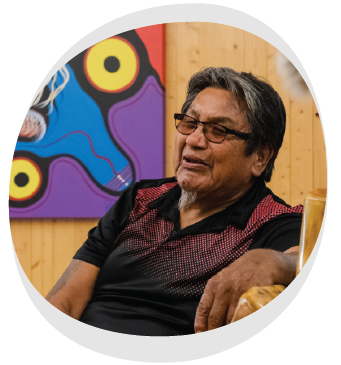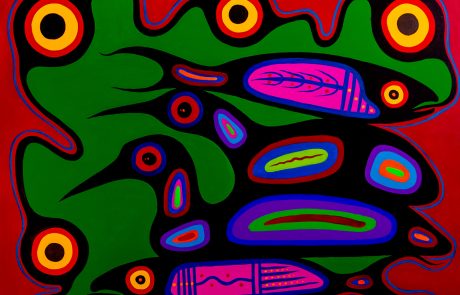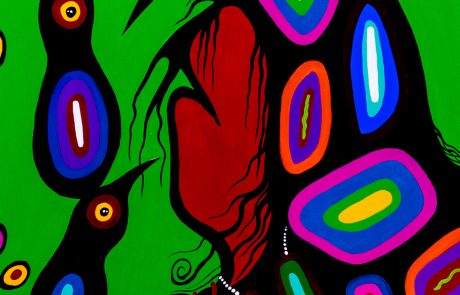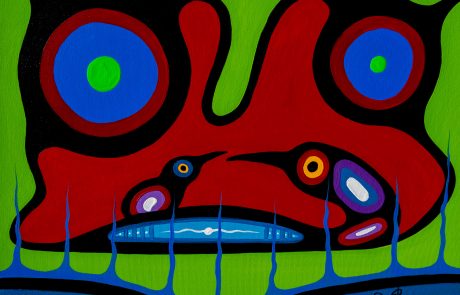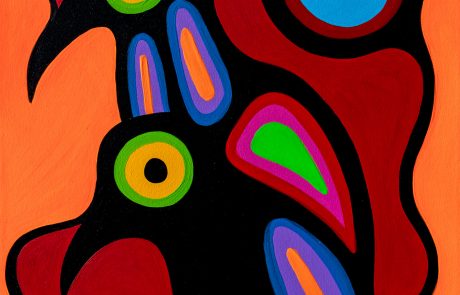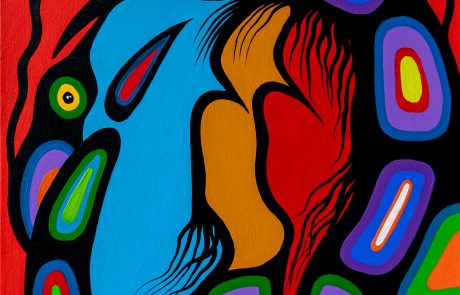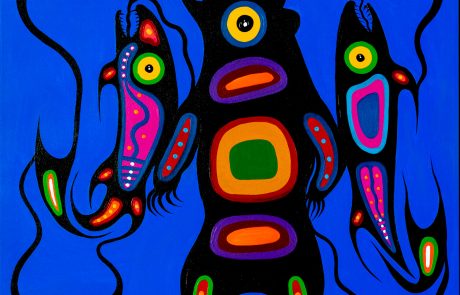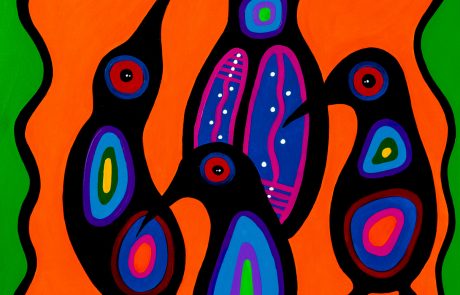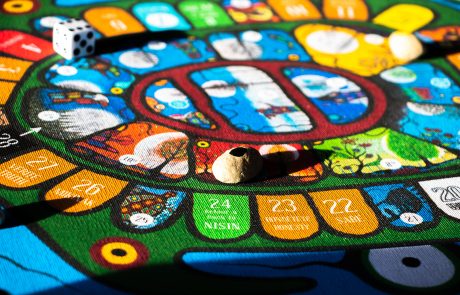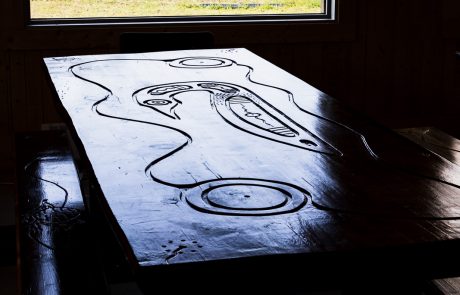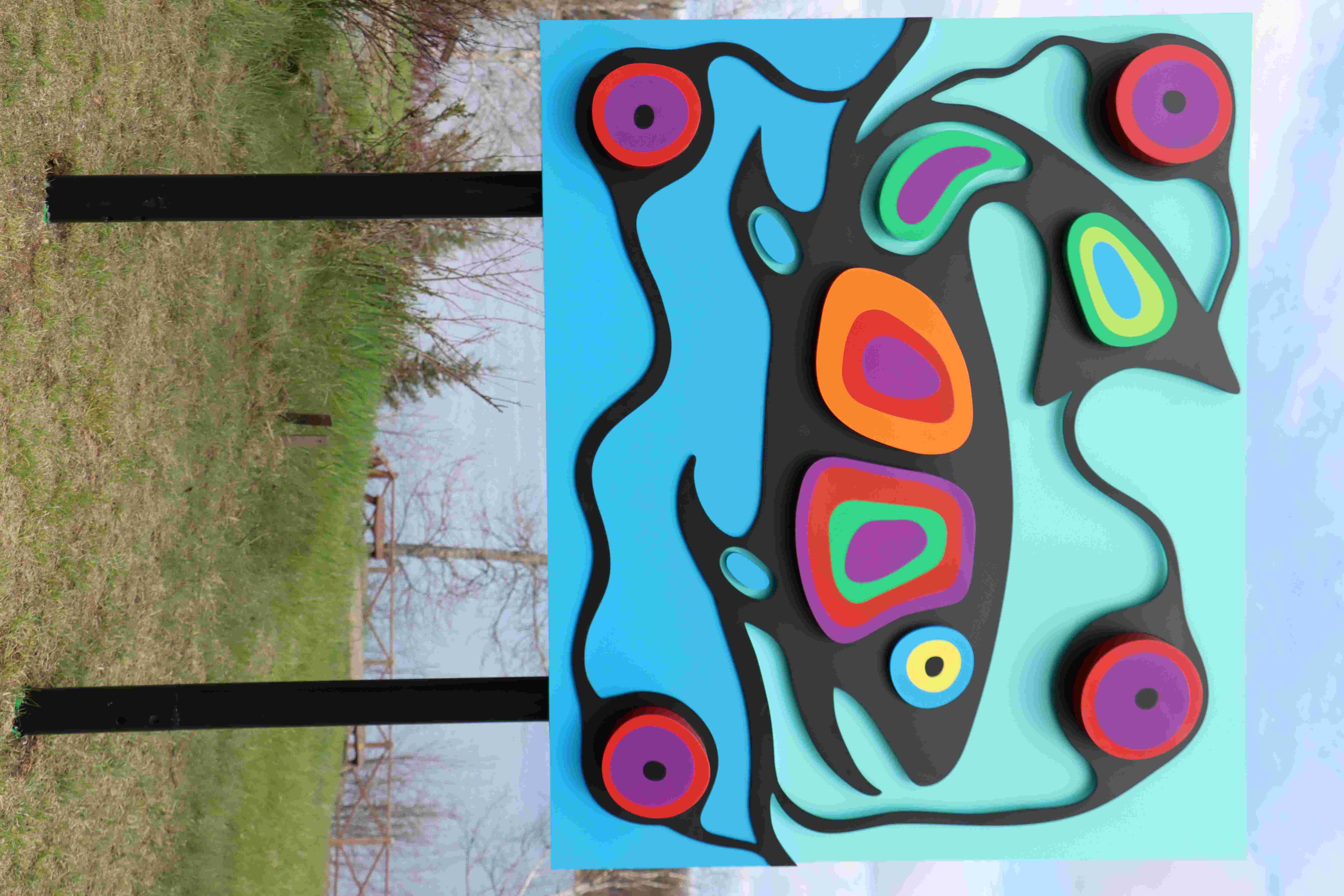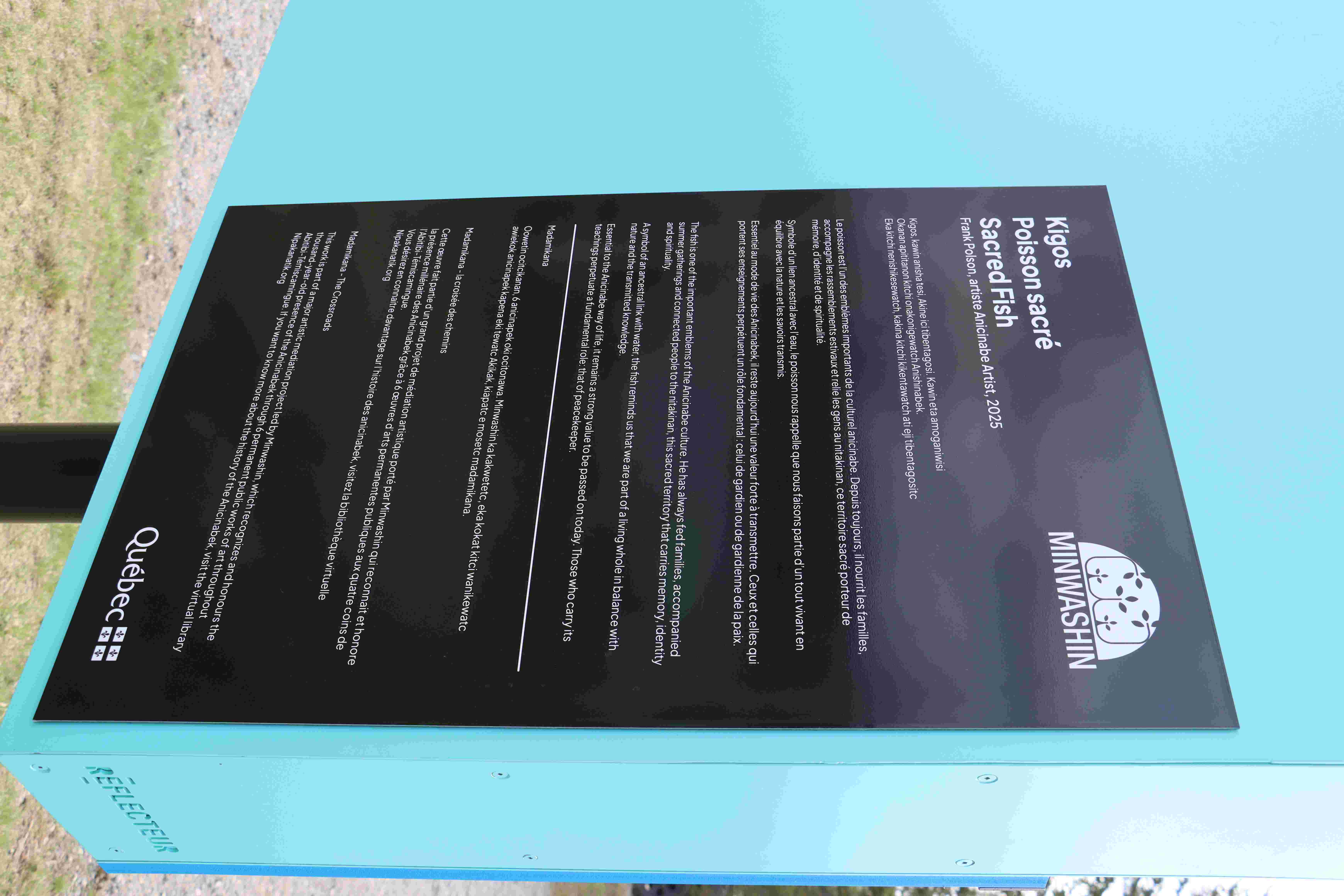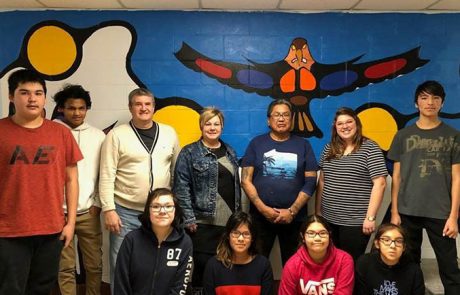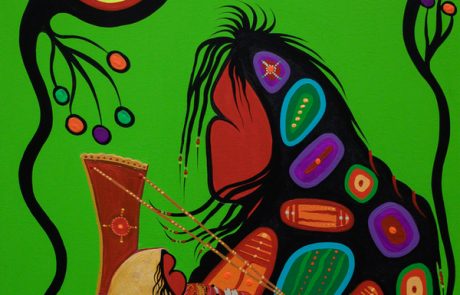From an early age, art soon became my refuge, taking comfort in drawing the beaver and moose seen along the shore when my father Walter took me out to his trapline. It’s only after a succession of art school drop outs, two separations and serving 60 months in a federal penitentiary that art began to put me on the road to independence.
I met an inmate and an artist who once told me: “All you need to do is believe in yourself”. Inspired by a book found at the library on Norwal Morrisseau, I began to create pictures, at first using house paint from the jail woodwork shop, and jean jackets and torn bed sheets to make canvas. Prison visitors started buying my work, and during a day-pass, I arranged for my first exhibition at the Thomas B. Maracle Gallery on Tyendinaga Mohawk Territory, where four works were sold. An estimated 2,600 paintings later, I survived a substance abuse relapse, another jail term and a heart attack. But today I am sober and maintaining contact with my children and grandchildren.
Painting makes me feel like I am doing something for myself. It is exciting to be part of the evolution of contemporary Algonquin art, which is now collected and exhibited around the world. As an Algonquin First Nation painter and sculptor, I have adopted my artistic heritage in a way that my elders would have never imagined, expressing my aesthetic, political and social views in a range of styles and media. My realistic depictions of daily activities, Northwestern Quebec wildlife and traditional spirituality, including legends and shamanistic transformations, are very powerful. The Great Northern Diver and the Timber Wolf remain among my favourite wildlife symbols.
Interviewed about the new coin collection that I designed for the Royal Canadian Mint, here is what the Wendat art sociologist Guy Sioui Durand said about me:
« It is an incredible tribune, but the impact of his work in the community is just as important… At first, we saw the influence of Ojibway artist Norwal Morrisseau, founder of the Woodland Art movement in the 60’s. Now, he has his own signature. His evolution is very interesting » [Free translation] – La Frontière, February 9, 2018
Every occasion I get to show my work allows me to break my people’s isolation, promote our traditions and build a bridge between cultures. The situation of our youth truly concerns me, so I am always very happy to share with them my experience, and tell them how much art has helped me free myself and gain access to a healthy lifestyle, full of discoveries. I am very grateful to the elders who helped me regain and maintain my balance.
Frank Polson also took part in MADAMIKANA – the crossroads – an artistic mediation project led by Minwashin to recognize and celebrate the age-old presence of the Anicinabek through 6 permanent public artworks across Abitibi-Témiscamingue.
See also: Cultural mediation project at Le Tremplin school


